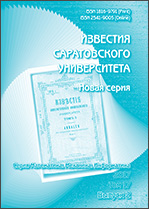|
Mechanics
Finite element model of the carotid bifurcation
A. V. Kamenskiy
Saratov State University, Chair of Mathematical Theory of Elasticity and Biomechanics
Abstract:
A fluid-solid interaction problem of a pulsation of the human carotid bifurcation was solved using finite element method. Hyperelastic orthotropic wall model that accounts for the carotid histological structure and in-vivo vessel geometry obtained from the CT-imaging were utilized. In-vivo blood flow boundary conditions for the problem were determined using Doppler Ultrasound. Results of the modeling were analyzed for correlation between zones of low wall shear stress (WSS) for blood flow, high cyclic strain (CS) and high effective stress
(ES) for vessel wall with the zones of atherosclerosis formation on the CT-angiogram.
Citation:
A. V. Kamenskiy, “Finite element model of the carotid bifurcation”, Izv. Saratov Univ. Math. Mech. Inform., 7:1 (2007), 48–54
Linking options:
https://www.mathnet.ru/eng/isu144 https://www.mathnet.ru/eng/isu/v7/i1/p48
|

|




 Contact us:
Contact us: Terms of Use
Terms of Use
 Registration to the website
Registration to the website Logotypes
Logotypes








 Citation in format
Citation in format 